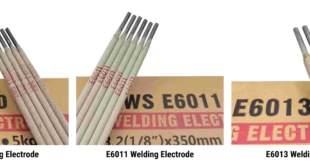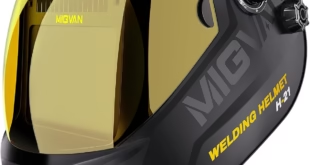Essential Welding Equipment And Tools
Introduction
Welding is a fundamental process used in the manufacturing, construction, and repair of metal structures and equipment. It involves heating two metal parts to their melting points and joining them together by melting a filler metal into the joint. Welding is a highly specialized skill that requires the use of specific equipment and tools to achieve high-quality welds. One of the most critical aspects of welding is the preparation of the metal surface before welding. Metal surfaces must be clean, free from contaminants, and properly aligned to ensure the weld joint is strong and reliable. To achieve this, a variety of welding equipment and tools are used, each with a specific function and purpose.
In this article, we will explore some of the essential welding equipment and tools used in the welding process. We will provide a detailed description of each tool and its function, as well as how it is used during the welding process. Understanding these tools and their functions is crucial to achieving high-quality welds that are strong and reliable.

List of Welding Equipment And Tools
Here is a list of common welding equipment and tools used in the welding process:
- Welding machine (also known as a welder)
- Welding electrode (or welding wire)
- Welding torch (or welding gun)
- Shielding gas (such as argon, carbon dioxide, or a mixture of gases)
- Electrode holder (or wire feeder)
- Ground clamp
- Welding helmet (to protect the welder’s eyes and face from radiation)
- Welding gloves (to protect the hands from heat and sparks)
- Welding jacket (to protect the upper body from heat and sparks)
- Welding apron (to protect the lower body from heat and sparks)
- Chipping hammer (to remove slag from the welded metal)
- Wire brush (to clean the metal before welding)
- Angle grinder (to prepare the metal surface for welding)
- Welding table (to hold the metal in place during welding)
- Welding curtains (to protect the surrounding area from sparks and radiation)
The specific tools and equipment needed will depend on the type of welding being performed, the materials being welded, and the size and complexity of the project.
Details of Welding Equipment And Tools
Here is a brief description of each of the welding equipment and tools:
1- Welding Machine
A welding machine, also known as a welder, is a piece of equipment that generates heat to join two or more metal parts together. The machine uses an electrical current to heat up the welding electrode or wire, which melts and fuses with the metal parts to form a solid joint. There are several types of welding machines, including stick welders, MIG welders, and TIG welders, each with its unique features and benefits.
2- Welding Electrode
A welding electrode is a metal wire that is used to conduct electricity during the welding process. The electrode is coated with a flux material that creates a shielding gas when heated, protecting the welding area from atmospheric contamination. The type of electrode used depends on the type of metal being welded, the welding technique, and the intended application.
3- Welding Torch
A welding torch, also known as a welding gun, is a handheld device that directs the heat generated by the welding machine to the metal parts being joined. The torch contains a trigger that controls the flow of electricity and gas to the welding electrode or wire, allowing the welder to adjust the heat and penetration of the weld.
4- Shielding Gas
Shielding gas is a gas or mixture of gases that is used to protect the welding area from atmospheric contamination. The gas is typically fed through the welding torch or machine and flows around the welding electrode or wire, preventing oxidation, nitriding, or other chemical reactions that could weaken the weld.
5- Electrode Holder
An electrode holder is a clamp or device used to hold the welding electrode or wire in place during welding. The holder is typically attached to the welding torch or machine and allows the welder to control the position of the electrode or wire with precision.
6- Ground Clamp
A ground clamp is a device that is used to connect the welding machine to the metal being welded, creating a circuit that allows the current to flow through the metal parts and the welding electrode or wire.
7- Welding Helmet
A welding helmet is a protective gear that covers the welder’s face and eyes from the intense light and radiation produced during welding. The helmet typically features a darkened glass lens that filters out harmful UV and IR radiation and protects the welder’s eyes from flying sparks and debris.
8- Welding Gloves
Welding gloves are specialized gloves made from heat-resistant materials that protect the welder’s hands from heat, sparks, and electric shock. The gloves are typically made from leather or other durable materials and are designed to provide a secure grip on the welding torch and electrode holder.
9- Welding Jacket
A welding jacket is a protective garment that covers the upper body of the welder, protecting the skin and clothing from sparks and heat. The jacket is typically made from flame-resistant materials, such as leather or cotton, and features a high collar and long sleeves to provide maximum coverage.
10- Welding Apron
A welding apron is a protective garment that covers the lower body of the welder, protecting the legs and clothing from sparks and heat. The apron is typically made from the same materials as the welding jacket and features adjustable straps and pockets for added convenience.
11- Chipping Hammer
A chipping hammer is a handheld tool that is used to remove slag and other impurities from the welded metal. The hammer features a pointed or chisel-like tip that is used to chip away at the slag, revealing the solid metal beneath.
12- Wire Brush
A wire brush is a tool used to clean the metal surface before welding. Wire brushes come in different shapes and sizes to suit different cleaning needs. Some wire brushes have a long handle for easy access to hard-to-reach areas, while others have a shorter handle for more precise cleaning. The bristles can also vary in thickness and stiffness, depending on the level of abrasiveness needed for the cleaning task.
13- Angle Grinder
An angle grinder is a handheld tool that is used to prepare the metal surface for welding. The grinder features a rotating abrasive disc or wheel that is used to grind and smooth the metal surface, removing rust, paint, and other contaminants.
14- Welding Table
A welding table is a specialized workbench designed for welding tasks. The table is typically made from steel or other durable materials and features a flat surface with holes for clamping and holding the metal parts in place during welding.
15- Welding Curtains
Welding curtains are protective curtains that are used to prevent sparks and radiation from spreading beyond the welding area. The curtains are made from heat-resistant materials and are typically hung around the welding area to provide a physical barrier between the welding area and other work areas.
When selecting welding equipment and tools, it is essential to consider the specific requirements of the welding project. For example, the type of welding machine and welding electrode needed will depend on the thickness and type of metal being welded, the desired joint strength, and the welding technique being used. Similarly, the choice of protective gear will depend on the welding environment, the risk of injury, and the level of comfort and mobility required.
FAQs
What are the 5 essentials of welding?
The 5 essentials of welding are:
- Welding machine or power source
- Welding electrode or filler material
- Protective gear (such as helmet, gloves, and apron)
- Welding surface or workpiece
- Proper welding technique or skill
What are 5 weld types?
The 5 main types of welding are:
- Gas Tungsten Arc Welding (GTAW/TIG)
- Gas Metal Arc Welding (GMAW/MIG)
- Flux-Cored Arc Welding (FCAW)
- Shielded Metal Arc Welding (SMAW/stick)
- Submerged Arc Welding (SAW)
What are the 2 principle types of welding?
The 2 principal types of welding are:
- Fusion welding: involves melting and joining metal parts without adding a filler material.
- Pressure welding: involves joining metal parts by applying pressure without melting..
What are the five arc welding equipment?
The five most common types of arc welding equipment are:
- Stick welder (SMAW): A type of welding machine that uses a consumable electrode coated in flux to create an arc that melts and fuses metals together.
- MIG welder (GMAW): A type of welding machine that uses a wire fed through a spool to create an arc that melts and fuses metals together.
- TIG welder (GTAW): A type of welding machine that uses a non-consumable tungsten electrode to produce a weld with or without filler material
Conclusion
In conclusion, welding is a critical process used in a wide range of industries to join metal parts and structures. Achieving high-quality welds requires proper preparation of the metal surface and the use of specialized welding equipment and tools. Each tool serves a specific function and purpose in the welding process, from preparing the metal surface to protecting the welder from hazardous materials and radiation.
As technology advances, new welding equipment and tools are being developed to improve the accuracy and efficiency of the welding process. It is essential to stay up-to-date with the latest developments in welding technology to ensure that the best tools and equipment are used for each welding project.
 Welding of Welders All about Welding and Welders
Welding of Welders All about Welding and Welders



